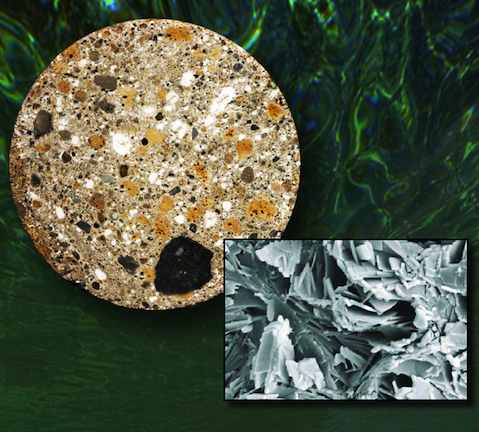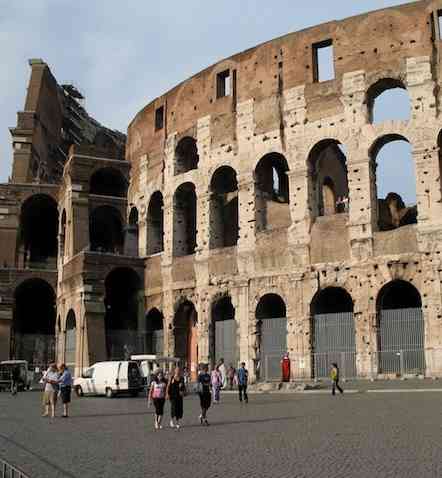 The chemical secrets of a concrete Roman breakwater that has spent the last 2,000 years submerged in the Mediterranean Sea have been uncovered by an international team of researchers led by a professor of civil and environmental engineering at the University of California, Berkeley.
The chemical secrets of a concrete Roman breakwater that has spent the last 2,000 years submerged in the Mediterranean Sea have been uncovered by an international team of researchers led by a professor of civil and environmental engineering at the University of California, Berkeley.
Analysis of the samples pinpointed why the best Roman concrete was superior to most modern concrete in durability, why its manufacture was less environmentally damaging – and how these improvements could be adopted in the modern world.
“It’s not that modern concrete isn’t good – it’s so good we use 19 billion tons of it a year,” says Paulo Monteiro of the U.S. Department of Energy’s Lawrence Berkeley National Laboratory. “The problem is that manufacturing Portland cement accounts for seven percent of the carbon dioxide that industry puts into the air.”
Cutting greenhouse gas emissions is one powerful incentive for finding a better way to provide the concrete the world needs; another is the need for stronger, longer-lasting buildings, bridges, and other structures.
“In the middle 20th century, concrete structures were designed to last 50 years, and a lot of them are on borrowed time,” Monteiro says. “Now we design buildings to last 100 to 120 years.” Yet Roman harbor installations have survived 2,000 years of chemical attack and wave action underwater.
How the Romans did it
 The Romans made concrete by mixing lime and volcanic rock. For underwater structures, lime and volcanic ash were mixed to form mortar, and this mortar and volcanic tuff were packed into wooden forms. The seawater instantly triggered a hot chemical reaction. The lime was hydrated – incorporating water molecules into its structure – and reacted with the ash to cement the whole mixture together.
The Romans made concrete by mixing lime and volcanic rock. For underwater structures, lime and volcanic ash were mixed to form mortar, and this mortar and volcanic tuff were packed into wooden forms. The seawater instantly triggered a hot chemical reaction. The lime was hydrated – incorporating water molecules into its structure – and reacted with the ash to cement the whole mixture together.
Descriptions of volcanic ash have survived from ancient times. First Vitruvius, an engineer for the Emperor Augustus, and later Pliny the Elder recorded that the best maritime concrete was made with ash from volcanic regions of the Gulf of Naples (Pliny died in the eruption of Mt. Vesuvius that buried Pompeii), especially from sites near today’s seaside town of Pozzuoli. Ash with similar mineral characteristics, called pozzolan, is found in many parts of the world.
Using experimental facilities from UC Berkeley, Saudi Arabia and Germany, they found that Roman concrete from Pozzuoli differs from the modern kind in several essential ways. One is the kind of glue that binds the concrete’s components together, with the Roman mineral mix producing an exceptionally stable binder. The results revealed a mineral mix with potential applications for high-performance concretes, including the encapsulation of hazardous wastes.
“For us, pozzolan is important for its practical applications,” says Monteiro. “It could replace 40 percent of the world’s demand for Portland cement. And there are sources of pozzolan all over the world. Saudi Arabia has mountains of it.”
Stronger, longer-lasting modern concrete, made with less fuel and less release of carbon into the atmosphere, may be the legacy of a deeper understanding of how the Romans made their incomparable concrete.
(Learn more: Lawrence Berkeley National Lab)



















